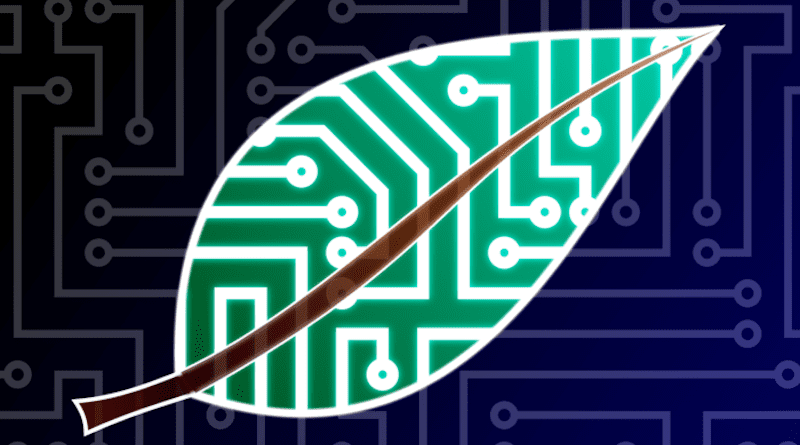Robots Could Produce Solar Fuels To Speed Up Global Shift To Renewable Energy
A ‘cyber-leaf’ designed and assembled using robots could help the world transition more quickly from climate change-inducing fossil fuels to green renewables, according to a new Cambridge study.
Fossil fuels – including coal, oil, and natural gas – have been powering economies for more than 150 years, and currently supply about 80 percent of the world’s energy.
In a paper published in Nature Reviews Materials, scientists from St John’s College, University of Cambridge, outline how the process of producing solar fuels could soon be sped up by robots to reduce the world’s reliance on fossil fuels.
“Artificial intelligence could be the key to reducing our dependence on fossil fuels. People are starting to realise that it’s important to be energy-independent. There is quite a push by European countries to transition quicker towards greener energy and solar power,” said Dr Virgil Andrei, co-author of the paper, who is a researcher at Cambridge University’s Yusuf Hamied Department of Chemistry and a Research Fellow at St John’s.
Inspired by energy harvesting in plants through photosynthesis, solar fuels synthesis uses only sunlight, carbon dioxide and water to produce hydrogen and carbon-based fuels such as syngas, a widely-used gas currently produced from fossil fuels.
Artificial leaves are a promising alternative for sustainable energy harvesting and storage but their complex production is currently mostly carried out manually by scientists in the laboratory. This makes the process impractical to replicate on an industrial scale but integrating robots and artificial intelligence is the key to accelerating a shift to green economies.
Having already developed an ‘artificial leaf’, which mimics plants to produce syngas sustainably, the chemists have been studying how this solar fuel production can be automated. Their concept of the ‘cyber-leaf’ – using robots to create the ‘artificial leaf’ on an industrial scale – would also remove the risk of human error.
Dr Andrei co-authored the paper with Dr Katarzyna Sokół, a former Scientific Project Officer at the European Research Council and currently an Associate at Cambridge Innovation Consulting who became interested in automation and machine learning during her time as a Postdoctoral Associate at Massachusetts Institute of Technology.
During postgraduate research at St John’s College, Dr Sokół led a study into new ways to harness solar power by altering the photosynthetic machinery in plants.
Since then the pair have been thinking about scalability – learning how to adapt the solar energy process for larger production and storage, to make it a viable and durable alternative to fossil fuels in the future.
“We have been working on developing artificial leaves for solar fuel production. But these are typically the small prototypes that you would make on a lab scale. For the past few years we have been trying to scale up these technologies, improve the fabrication of these devices and make them more practical, so we can push towards commercial applications,” said Dr Andrei.
The ‘big idea’ for the field of artificial photosynthesis or solar fuels is green hydrogen. Green hydrogen economies are attractive because they can produce very clean fuel – the only side product is water, so there are zero emissions. “Hydrogen will be one of the key fuels in the future, maybe in only 10 years’ time, so we have to invest in it and develop it now. Our idea is to accelerate this process,” said Dr Sokół.
“We know that nowadays robots are very useful in our daily lives – we have automated assembly lines in things like car manufacturing and in drug development. Scientists have been looking at how these technologies can be used to optimise solar fuel production,” said Dr Andrei. “We looked at the recent progress made by our colleagues and proposed how we can develop this further. What we envisage is a system that can run on its own – the hardware part will synthesise the materials, characterise them and test their performance towards solar fuel production. We would also have algorithms and software that can store this data and analyse it. It would be a self-sufficient process.”
The researchers are considering how existing technologies can be integrated into modern automated procedures to create continuous high output of solar fuels.
Investing in machine learning to upscale their production will be expensive and involve multi-disciplinary expertise not seen before between chemists, material scientists, robotics engineers and computer science experts. “We are chemists and material scientists, we’re not used to working with robots yet,” said Dr Sokół. “It is a new concept so there will need to be strong collaboration outside of our departments or fields to make this happen. It will be very multidisciplinary, there will have to be consensus that this needs to happen.
“It is a huge technical challenge but using artificial intelligence will save years in this area of scientific discovery.”

